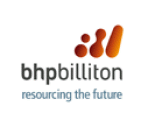Feedback
Billiton N.V.

Location
Netherlands
Contact
Page Review
Last updated
About
Brief history of Billiton
Billiton's origins stretch back to 29 September 1860, when the articles of association were approved by a meeting of shareholders in the Het Groot Keizerhof hotel in The Hague, Netherlands.
Two months later, the company acquired the concession to a tin-rich island in the Indonesian archipelago near Sumatra. The island was called Billiton (now Belitung), hence the name.
Billiton's initial business forays included tin and lead smelting in The Netherlands, followed in the 1940s by bauxite mining in Indonesia and Suriname. In 1970, the Royal Dutch/Shell group of companies acquired Billiton and accelerated the scope of progress of this growth.
In 1997, Billiton Plc became a constituent of the FTSE 100 Index.
Throughout the 1990s and beyond, Billiton experienced considerable growth. Its portfolio included aluminium smelters in South Africa and Mozambique, nickel operations in Australia and Colombia, base metals mines in South America, Canada and South Africa, coal mines in Australia, Colombia and South Africa, as well as interests in operations in Brazil, Suriname, Australia (aluminium) and South Africa (titanium minerals and steel and ferroalloys).
http://www.nationaalarchief.nl/toegangen/pdf/NL-HaNA_2.20.51.ead.pdf - -
PT Timah (Persero) Tbk has a long history of tin mining in Indonesia for more than 200 years.
Bangka Tin Winning Bedrijf(BTW)
Gemeenschaappelijke Mijnbouw Maatschaappij Billiton (GMB)
Singkep TIN Exploitatie Maatschappij (SITEM)
The Dutch companies were nationalized to be three State-Owned Companies, comprising:
- BTW to be PN Tambang Timah Bangka
- GMB to be PN Tambang Timah Belitung
- SITEM to be PN Tambang Timah Singkep
1953 - 1958
The Dutch companies were nationalized to be three State-Owned Companies, comprising:
- BTW to be PN Tambang Timah Bangka
- GMB to be PN Tambang Timah Belitung
- SITEM to be PN Tambang Timah Singkep
Equipment - active
We found no active equipment for this owner.
If this company is part of a larger holding, the equipment should be listed over there.
Did we make an error? Please let us know through the Feedback form on the left or the Contact Form.
Equipment - historical
Companies
| Name | Country |
|---|---|
| Singkep Tin Maatschappij | Malaysia |
